INSTITUT SUPERIEUR D'ANTHROPOLOGIE
INSTITUTE OF ANTHROPOLOGY
ONLINE COURSES / COURS A DISTANCE
FALL TERM : OCTOBER 2015
REGISTER NOW
USA – 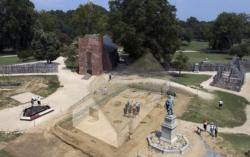 Jamestown - About five years after the footprint of the first Jamestown colony church was discovered, archaeologists and other specialists are busy partially reconstructing the structure. Believed to be the place where Pocahontas married the English tobacco planter John Rolfe, archaeologists hope that the reconstruction will provide the public with a real life, physical replica of the building that made history more than 400 years ago near the banks of the James River in southern Virginia. The church was built by the colonists in 1608 initially as a wood structure, then replaced by a brick structure later.
Jamestown - About five years after the footprint of the first Jamestown colony church was discovered, archaeologists and other specialists are busy partially reconstructing the structure. Believed to be the place where Pocahontas married the English tobacco planter John Rolfe, archaeologists hope that the reconstruction will provide the public with a real life, physical replica of the building that made history more than 400 years ago near the banks of the James River in southern Virginia. The church was built by the colonists in 1608 initially as a wood structure, then replaced by a brick structure later.
http://popular-archaeology.com/issue/june-2013/article/archaeologists-rebuild-1608-church-where-pocahontas-was-married
VIDEO = https://www.youtube.com/watch?v=NE5JO-8iK5g
EGYPTE – 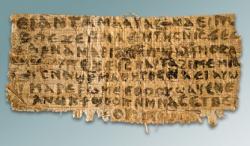 When Harvard’s Karen King announced at a 2012 scholarly conference in Rome that a fragment of an authentic fourth-century gospel had come into her hands in which Jesus, speaking in the first person, refers to “my wife,” that was only the beginning. In “The Saga of ‘The Gospel of Jesus’ Wife’” in the May/June 2015 issue of Biblical Archaeology Review, BAR editor Hershel Shanks describes the tale of this controversial papyrus fragment. Less than a week after the publication of the Coptic fragment in Harvard Theological Review and the release of other fragments from the collection, a Coptic manuscripts expert demonstrated “beyond doubt” that the Gospel of Jesus’ Wife was a forgery.
When Harvard’s Karen King announced at a 2012 scholarly conference in Rome that a fragment of an authentic fourth-century gospel had come into her hands in which Jesus, speaking in the first person, refers to “my wife,” that was only the beginning. In “The Saga of ‘The Gospel of Jesus’ Wife’” in the May/June 2015 issue of Biblical Archaeology Review, BAR editor Hershel Shanks describes the tale of this controversial papyrus fragment. Less than a week after the publication of the Coptic fragment in Harvard Theological Review and the release of other fragments from the collection, a Coptic manuscripts expert demonstrated “beyond doubt” that the Gospel of Jesus’ Wife was a forgery.
https://us-mg5.mail.yahoo.com/neo/launch?.rand=6mhalrgs6gekg#1308735949
TURQUIE – 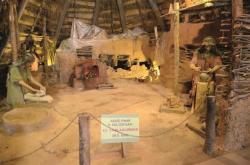 Aşağıpınar - Agricultural remnants from 6,000 years ago are expected to be unearthed this year during archaeological excavations that have lasted for 22 years in the Thracian province of Kırklareli’s Aşağıpınar area. The head of the excavations, Istanbul University Professor Mehmet Özdoğan, said excavation work would start in July of this year. He said they had been working on the earliest agricultural traces in Thrace for four years, finally reaching important data. “We are excited to unearth agricultural remnants from 6,000 years ago. Last year, we found significant data on prehistoric people in terms of agriculture. We found that these people used dairy products 6,000 years ago. They were boiling milk.” He said excavations would end in about three years and that they expected to reach the lowest layer of Aşağıpınar during the process. He also said that after the excavations were done, the region would become an open-air museum.
Aşağıpınar - Agricultural remnants from 6,000 years ago are expected to be unearthed this year during archaeological excavations that have lasted for 22 years in the Thracian province of Kırklareli’s Aşağıpınar area. The head of the excavations, Istanbul University Professor Mehmet Özdoğan, said excavation work would start in July of this year. He said they had been working on the earliest agricultural traces in Thrace for four years, finally reaching important data. “We are excited to unearth agricultural remnants from 6,000 years ago. Last year, we found significant data on prehistoric people in terms of agriculture. We found that these people used dairy products 6,000 years ago. They were boiling milk.” He said excavations would end in about three years and that they expected to reach the lowest layer of Aşağıpınar during the process. He also said that after the excavations were done, the region would become an open-air museum.
http://www.hurriyetdailynews.com/excavations-to-find-agricultural-remnants-.aspx?pageID=238&nID=81610&NewsCatID=375
POLOGNE – 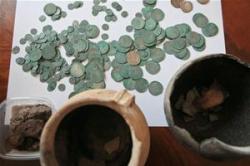 Krzystkowice - Two clay pots filled with more than 6 thousand silver coins, preliminarily dated to the sixteenth and seventeenth century, were discovered by a forester from Forestry Krzystkowice in the forest near the village of Guzów - told PAP the Provincial Conservator Barbara Bielinis-Kopeć. The find was transferred to the Archaeological Museum of the Middle Odra in Świdnica (Lubuskie). "This is the greatest discovery of this kind made in today’s province Lubuskie. After counting, it turned out that the pots contained 6 159 coins, including 5 370 smaller denarii and 787 larger Prague groschen" - told PAP Bielinis-Kopeć. She added that not all coins were cleaned, so dating could change. For now, it was found that the oldest had been minted in 1516, and the newest - in 1612. According to specialists, the coins are in relatively good condition, some only have traces of tarnish, others are stuck together in larger lumps of a few to dozen pieces.
Krzystkowice - Two clay pots filled with more than 6 thousand silver coins, preliminarily dated to the sixteenth and seventeenth century, were discovered by a forester from Forestry Krzystkowice in the forest near the village of Guzów - told PAP the Provincial Conservator Barbara Bielinis-Kopeć. The find was transferred to the Archaeological Museum of the Middle Odra in Świdnica (Lubuskie). "This is the greatest discovery of this kind made in today’s province Lubuskie. After counting, it turned out that the pots contained 6 159 coins, including 5 370 smaller denarii and 787 larger Prague groschen" - told PAP Bielinis-Kopeć. She added that not all coins were cleaned, so dating could change. For now, it was found that the oldest had been minted in 1516, and the newest - in 1612. According to specialists, the coins are in relatively good condition, some only have traces of tarnish, others are stuck together in larger lumps of a few to dozen pieces.
http://scienceinpoland.pap.pl/en/news/news,404755,forester-found-a-treasure-of-over-6-thousand-silver-coins.html
ROYAUME UNI – 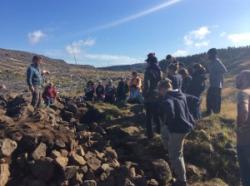 Kildavie - The Field School will consist of 2 weeks excavation at the abandoned settlement of Kildavie, possibly dating back to the Early Medieval period. The settlement was inhabited until the 18th Century before being abandoned, with many villagers leaving Scotland for North America. Previous investigations have identified at least sixteen structures ranging from domestic dwellings to possible sites of cottage industry. The excavation aims to investigate the origins of the site, and to determine the function/use of the buildings.
Kildavie - The Field School will consist of 2 weeks excavation at the abandoned settlement of Kildavie, possibly dating back to the Early Medieval period. The settlement was inhabited until the 18th Century before being abandoned, with many villagers leaving Scotland for North America. Previous investigations have identified at least sixteen structures ranging from domestic dwellings to possible sites of cottage industry. The excavation aims to investigate the origins of the site, and to determine the function/use of the buildings.
http://www.archaeology.co.uk/digging/fieldwork/kildavie-excavation-2015.htm?